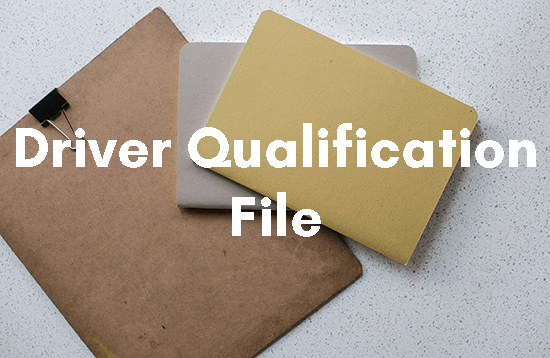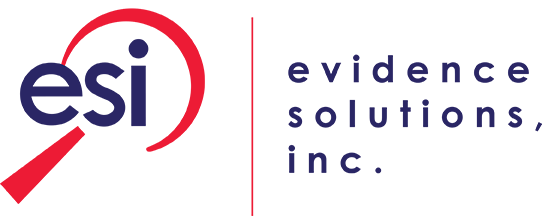 The driver qualification file is the backbone of a driver's ability to participate in interstate or, in many cases, intrastate commerce. A driver with a proper license and medical card could rent a truck and drive it, but unless all the requirements listed below are met, they can't pick up a load and engage in commerce. They're also not authorized to drive in that manner, period, unless all elements are met, and that can be the "make or break" scenario during a crash investigation.
The driver qualification file is the backbone of a driver's ability to participate in interstate or, in many cases, intrastate commerce. A driver with a proper license and medical card could rent a truck and drive it, but unless all the requirements listed below are met, they can't pick up a load and engage in commerce. They're also not authorized to drive in that manner, period, unless all elements are met, and that can be the "make or break" scenario during a crash investigation.
Verification of employment is a critical part of the driver qualification file, which is governed by FMCSA 49 CFR 391.51. Verification of employment itself is governed by FMCSA 49 CFR 391.23(a)(1) and (b):
Carriers must investigate the driver's employment record during the preceding three years. This investigation must be completed within 30 days of the date employment begins. Carrier must retain a record of the request and all response documentation. Also, all jobs must be listed for the past 10 years from the date of the application, with no breaks – any gaps must be explained in the application.
This file must be maintained for the life of employment + 3 years after termination.
391.23(a): An inquiry, within 30 days of the date the driver's employment begins, to each driver's licensing authority where the driver held or holds a motor vehicle operator's license or permit during the preceding 3 years to obtain that driver's motor vehicle record.
Plus - An investigation of the driver's safety performance history with DOT-regulated employers during the preceding three years must be conducted.
391.23(b): A copy of the motor vehicle record(s) obtained in response to the inquiry or inquiries to each driver's licensing authority required by paragraph (a)(1) of this section must be placed in the driver qualification file within 30 days of the date the driver's employment begins and be retained in compliance with § 391.51. If no motor vehicle record is received from a driver's licensing authority required to submit this response, the motor carrier must document a good faith effort to obtain such information. The inquiry to a driver's licensing authority must be made in the form and manner each authority prescribes.
A written record of each previous employer contacted, whether by phone, mail, or another method, must be kept. The record must include the previous employer's name, address, date contacted or attempts made, and information received (if applicable). Even in cases where companies do not receive an immediate response, they must still document their good faith efforts to attain the information.
Replies to the investigations of the driver's safety performance history required by paragraph (a)(2) of this section, or documentation of good faith efforts to obtain the investigation data, must be placed in the driver investigation history file, after October 29, 2004, within 30 days of the date the driver's employment begins. Any period of time required to exercise the driver's due process rights to review the information received, request a previous employer to correct or include a rebuttal, is separate and apart from this 30-day requirement to document investigation of the driver safety performance history data.
(2) The investigation may consist of personal interviews, telephone interviews, letters, or any other method for investigating that the carrier deems appropriate. Each motor carrier must make a written record with respect to each previous employer contacted, or good faith efforts to do so. The record must include the previous employer's name and address, the date the previous employer was contacted, or the attempts made, and the information received about the driver from the previous employer. Failures to contact a previous employer, or of them to provide the required safety performance history information, must be documented. The record must be maintained pursuant to § 391.53.
(3) Prospective employers should report failures of previous employers to respond to an investigation to the FMCSA and use the complaint procedures specified at § 386.12 of this subchapter. Keep a copy of the reports in the driver investigation history file as part of documenting a good faith effort to obtain the required information.
(4) For drivers with no previous employment experience working for a DOT-regulated employer during the preceding three years, documentation that no investigation was possible must be placed in the driver investigation history file, after October 29, 2004, within the required 30 days of the date the driver's employment begins.
(d) The prospective motor carrier must investigate, at a minimum, the information listed in this paragraph from all previous employers of the applicant that employed the driver to operate a CMV within the previous three years. The investigation request must contain specific contact information on where the previous motor carrier employers should send the information requested.
(1) General driver identification and employment verification information.
(2) The data elements as specified in § 390.15(b)(1) of this chapter for accidents involving the driver that occurred in the three-year period preceding the date of the employment application.
(i) Any accidents as defined by § 390.5 of this chapter.
(ii) Any accidents the previous employer may wish to provide that are retained pursuant to § 390.15(b)(2), or pursuant to the employer's internal policies for retaining more detailed minor accident information.
Another important aspect is the drug and alcohol verification requirements. An employer must also investigate with previous employers whether prospective drivers have violated the alcohol and controlled substances prohibitions, any follow up rehabilitation programs, positive tests, testing refusals, and other relevant scenarios.
In addition to the investigations required by paragraph (d) of this section, the prospective motor carrier employers must investigate the information listed below in this paragraph from all previous DOT regulated employers that employed the driver within the previous three years from the date of the employment application, in a safety-sensitive function that required alcohol and controlled substance testing specified by 49 CFR part 40.
(1) Whether, within the previous three years, the driver had violated the alcohol and controlled substances prohibitions under subpart B of part 382 of this chapter, or 49 CFR part 40.
(2) Whether the driver failed to undertake or complete a rehabilitation program prescribed by a substance abuse professional (SAP) pursuant to § 382.605 of this chapter, or 49 CFR part 40, subpart O. If the previous employer does not know this information (e.g., an employer that terminated an employee who tested positive on a drug test), the prospective motor carrier must obtain documentation of the driver's successful completion of the SAP's referral directly from the driver.
(3) For a driver who had successfully completed a SAP's rehabilitation referral, and remained in the employ of the referring employer, information on whether the driver had the following testing violations subsequent to completion of a § 382.605 or 49 CFR part 40, subpart O referral:
(i) Alcohol tests with a result of 0.04 or higher alcohol concentration;
(ii) Verified positive drug tests;
(iii) Refusals to be tested (including verified adulterated or substituted drug test results).
(4) As of January 6, 2023, employers subject to § 382.701(a) of this chapter must use the Drug and Alcohol Clearinghouse to comply with the requirements of this section with respect to FMCSA-regulated employers.
(i) If an applicant who is subject to follow-up testing has not successfully completed all follow-up tests, the employer must request the applicant's follow-up testing plan directly from the previous employer in accordance with § 40.25(b)(5) of this title.
(ii) If an applicant was subject to an alcohol and controlled substance testing program under the requirements of a DOT mode other than FMCSA, the employer must request alcohol and controlled substances information required under this section directly from those employers regulated by a DOT mode other than FMCSA.
** The overall DQ file can be found here: DQ FILE
Note the areas highlighted in blue (left margin of the chart) are not only initially required but also require ongoing updates for the up-to-date maintenance of the DQ file. The areas highlighted in yellow are only needed for initial qualification.
Other essential areas to be aware of:
FMCSA 49 CFR 383.111 requires the initial evaluation (road test) for the DQ file, but also a certification stating that either the training level of the driver is adequate for the company or that the driver needs additional training. Without this road test and certification, the driver is NOT qualified to drive.
FMCSA 391.11 essentially states that if all conditions and requirements of 391.51 (all DQ items) plus 383.111 (training certification) aren't met, the driver is NOT qualified to drive during interstate commerce.
If a driver gets into a crash, and everything in 391.51, 383.111, and 391.11 isn't met, the company is liable, and that driver shouldn't have been at the place and time of the crash – an automatic assumption of liability. Protect yourself!


